Air ducts play a bigger role in our indoor environment than most of us realize. Dust, pollen, and other small particles collect inside them over time, and those same particles can move through the air we breathe. Cleaning ducts helps lower the amount of airborne contaminants in a home or workplace.
When we look at how ducts affect air quality, it becomes clear that buildup inside the system doesn’t just stay hidden. It can spread through every room, making the air less clean and sometimes harder to breathe. By removing that buildup, we create a cleaner path for air to move through.
We will explore how duct cleaning reduces contaminants, how it can improve indoor air quality, and how it influences HVAC performance. We will also cover what the process looks like and what to consider before choosing a service.
How Duct Cleaning Reduces Airborne Contaminants

Air ducts can hold a wide range of airborne contaminants that affect indoor air quality. When we clean ductwork, we remove buildup that contributes to allergens, microbial growth, and chemical compounds circulating through the system.
Sources and Types of Airborne Contaminants in Ductwork
Air ducts collect contaminants over time as air moves through the system. Dust, dirt, and debris settle on duct walls and provide a surface where other particles can stick. This buildup can include both organic and inorganic matter.
Common contaminants include:
- Dust and dust mites
- Pollen and pet dander
- Mold spores and mildew
- Bacteria and viruses
- Volatile organic compounds (VOCs) from cleaning products or building materials
These contaminants enter ductwork through return vents and leaks in the system. Once inside, they circulate every time the HVAC system runs. Without cleaning, the concentration of these airborne particles increases, which can affect both comfort and health.
Impact of Duct Cleaning on Allergen and Particle Levels
Dust, pollen, and pet dander are major allergens that collect in ductwork. When air passes through dirty ducts, these particles spread into rooms and build up on surfaces. We often notice this as frequent dusting needs or allergy flare-ups.
Cleaning ducts reduces the load of airborne particles by physically removing them from the system. This lowers the amount of material entering the air each time the system cycles. For households with pets, duct cleaning can be especially helpful in reducing dander levels.
Studies show that cleaner ducts can decrease the circulation of fine particles. While duct cleaning does not remove allergens from carpets or furniture, it helps limit their spread through the HVAC system. This makes indoor air more consistent and easier to manage.
Role of Mold, Mildew, and Bacteria in Indoor Air
Moisture inside ducts creates conditions where mold and mildew can grow. Condensation from cooling coils or leaks in ductwork often leads to damp surfaces. Mold spores then spread through the air and may cause musty odors.
Bacteria also survive in ducts, especially in areas with dust and organic matter. When the system runs, these microorganisms move into living spaces and increase exposure risks. Some species can aggravate respiratory issues or trigger allergic reactions.
Duct cleaning removes visible mold growth, dust layers, and organic debris that support microbial survival. While it does not replace moisture control, it reduces the source of spores and bacteria that circulate indoors. Regular inspection and cleaning help us limit microbial buildup before it becomes a larger problem.
Duct Cleaning and the Spread of Viruses and VOCs
Viruses can travel through droplets and particles that linger in ductwork. Although ducts are not the main source of viral spread, accumulated dust can carry viral particles for short periods. Cleaning ducts helps reduce this reservoir and lowers the chance of redistribution.
Volatile organic compounds (VOCs) come from paints, cleaning supplies, and building materials. These gases enter the HVAC system and move through ducts into rooms. While duct cleaning cannot eliminate VOCs at their source, it can reduce the dust and residues that absorb and release them over time.
By removing layers of dust, we reduce both viral particles and chemical residues that cling to surfaces within the system. Cleaner ducts mean fewer contaminants re-enter the air, which supports a healthier indoor environment.
Duct Cleaning and Indoor Air Quality Improvement

When we remove dust, mold, and other debris from air ducts, we reduce the spread of particles that circulate through the home. Cleaner ducts help limit triggers for respiratory problems, improve comfort, and create a healthier living environment.
Effects on Respiratory Health and Allergic Reactions
Dust, pollen, and pet dander often collect inside ductwork. When air passes through, these particles spread into rooms and can irritate our lungs and nasal passages. People with allergies may notice more frequent sneezing, itching, or congestion when ducts remain dirty.
By cleaning ducts, we lower the amount of airborne particles that cause allergic reactions. This step does not remove every allergen in the home, but it reduces one common source.
We also lessen the risk of respiratory infections by cutting down on bacteria and mold spores that circulate through the system. Cleaner ducts help us breathe easier and reduce irritation that worsens existing conditions.
Key points:
- Fewer allergens in circulation
- Reduced nasal and throat irritation
- Lower chance of respiratory infections
Benefits for Asthma and Other Respiratory Conditions
Asthma symptoms often worsen when people breathe in dust, mold, or chemical residues. Dirty ducts can carry these irritants into living spaces, making it harder to control flare-ups.
When we clean ducts, we help lower these triggers. This can result in fewer asthma attacks and less need for medication adjustments. People with chronic respiratory conditions, such as bronchitis or COPD, may also notice improved comfort.
Cleaner airflow also supports better indoor air quality, which benefits everyone in the home. Even those without asthma may feel less coughing or throat irritation when the air carries fewer contaminants.
Examples of improvements:
- Reduced asthma flare-ups
- Less wheezing and coughing
- Improved breathing comfort
Reducing Odors and Creating a Healthier Living Environment
Over time, ducts trap odors from cooking, pets, smoke, or moisture. These smells can spread each time the system runs, leaving the home with a stale odor that does not go away with cleaning surfaces alone.
By removing built-up debris and mold, duct cleaning helps reduce these odors. This makes the air feel fresher and creates a more pleasant environment.
A healthier living environment also means less stress on our bodies. When the air smells clean and carries fewer irritants, we experience fewer headaches, less eye irritation, and a more comfortable space to live in.
Benefits include:
- Fresher indoor air
- Reduced stale odor
- More comfortable and healthier home environment
Duct Cleaning’s Influence on HVAC System Performance
Clean ductwork helps our heating and cooling equipment move air more efficiently, lowers strain on the ventilation system, and supports better energy use. It also affects how often we replace air filters and how well advanced filtration systems perform.
Airflow and Energy Efficiency
When dust and debris build up inside ducts, airflow slows down. Reduced airflow forces the HVAC system to work harder to push air through, which increases energy consumption.
By keeping ducts clear, we allow the heating and cooling system to deliver air evenly across all rooms. This steadier airflow helps maintain consistent temperatures and reduces unnecessary wear on fans and motors.
Key benefits of improved airflow:
- Less strain on heating and cooling equipment
- More stable indoor temperatures
- Lower energy use during peak demand
Regular duct cleaning does not replace system maintenance, but it supports overall energy efficiency by keeping air passages open.
Utility Bills and Energy Savings
Energy efficiency directly connects to utility bills. When ducts stay clean, the HVAC system does not need to run as long or as often to reach the set temperature. This shorter run time reduces energy consumption and lowers monthly costs.
For example, a cooling system with clogged ducts may cycle longer, which increases electricity use. Clean ducts allow the system to achieve the same comfort level with fewer cycles.
Comparison of possible outcomes:
| Condition of Ducts | System Run Time | Energy Use | Utility Bill Impact |
|---|---|---|---|
| Dirty / Blocked | Longer | Higher | Increased Costs |
| Clean / Maintained | Shorter | Lower | Reduced Costs |
We cannot control energy rates, but we can limit wasted energy by keeping the ventilation system free of buildup.
Role of Air Filters and HEPA Filtration Systems
Air filters capture dust, pollen, and other particles before they circulate. If ducts remain dirty, filters clog faster, which reduces airflow and forces the HVAC system to work harder. This shortens filter life and raises replacement costs.
HEPA filtration systems, which trap much smaller particles, also perform better when ducts are free of buildup. Clean ducts prevent particles from bypassing filters and re-entering the air supply.
Practical steps we can take:
- Replace standard air filters every 1–3 months
- Inspect HEPA filters as recommended by the manufacturer
- Schedule duct cleaning to reduce filter strain
By combining regular duct cleaning with proper filter maintenance, we help the heating and cooling system operate at peak efficiency while also improving indoor air quality.
The Duct Cleaning Process and Choosing a Service
Clean air ducts help reduce dust, mold, and other particles that circulate indoors. To keep air systems working well, we need to understand how ducts are cleaned, how to choose a reliable service, and how often to schedule maintenance.
Overview of the Duct Cleaning Process
The duct cleaning process begins with an inspection. We or the duct cleaners check for visible dust, debris, or signs of mold. Cameras or scopes may be used to see inside the ducts.
Once inspected, the duct cleaning service usually uses specialized vacuums and brushes. The vacuum creates negative pressure to pull out dust and particles. Brushes or air whips loosen debris stuck to duct walls.
Registers, grilles, and diffusers are removed and cleaned separately. In some cases, the blower motor, coils, and drip pans are also cleaned if needed.
A professional service may also apply an antimicrobial treatment, but only if there is confirmed microbial growth. This step should be explained clearly before use.
The process takes several hours depending on the size of the system and the level of contamination. We should expect the duct cleaning process to be thorough and not rushed.
Selecting a Professional Duct Cleaning Service
Not all duct cleaning services follow the same standards. We should look for companies that follow guidelines from organizations like the National Air Duct Cleaners Association (NADCA).
Key factors to check:
- Experience: Ask how long they have been providing air duct cleaning service.
- Equipment: Confirm they use high-powered vacuums and proper brushing tools.
- References: Request customer reviews or testimonials.
- Pricing: Get a written estimate and avoid unusually low offers.
We should also ask if the service includes cleaning of all components, not just the ducts. A complete job should cover supply ducts, return ducts, registers, and air handler parts.
Clear communication matters. A reliable duct cleaning service will explain the cleaning process, expected results, and any limitations before starting the work.
Frequency and Best Practices for Maintenance
Air duct cleaning is not needed every year for most homes. We should schedule it every 3 to 5 years, but the timing can change based on conditions.
We may need cleaning more often if:
- There is visible mold growth.
- Dust builds up quickly on furniture.
- We have pets that shed heavily.
- Someone in the home has allergies or asthma.
Routine maintenance also helps reduce the need for frequent cleaning. We should replace HVAC filters every 1 to 3 months, keep vents unblocked, and schedule regular system inspections.
By combining filter changes with periodic duct cleaning, we can manage airborne contaminants more effectively and extend the life of our HVAC system.




